Articles & Features
From Picasso to Haring: Striking Artist Murals Around the World
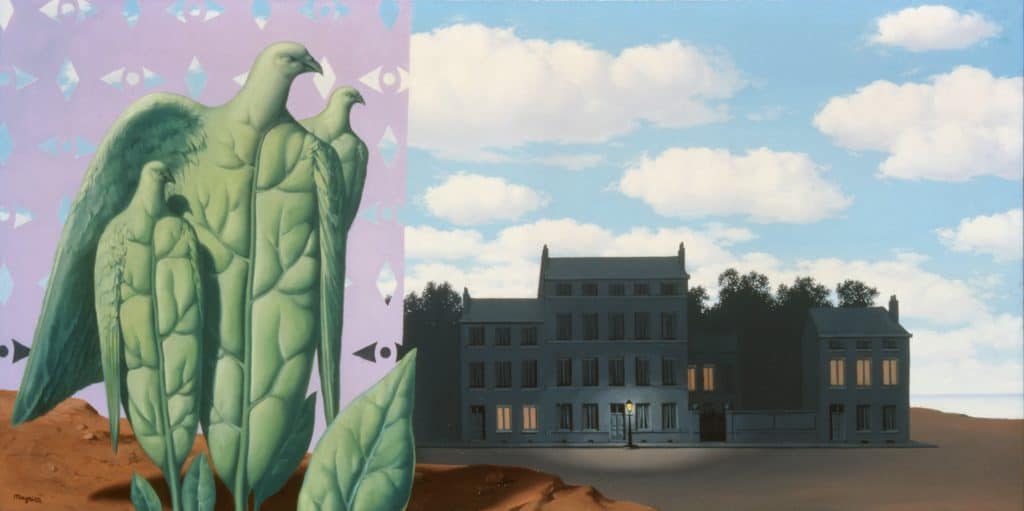
By: Tori Campbell
The Mural
The mural, or artwork painted directly onto the wall, ceiling or other permanent surface of a building, is often inextricably linked to the site in which it is initially displayed. From site specific works that proclaim information about the place, such as Keith Haring’s mural in Knokke, to the controversy surrounding the removal and replacement of Picasso’s The Fishermen in Oslo, Norway; murals can become icons for the places in which they are embedded. Explore some of the most spectacular, expansive, and iconic murals of the last century.
Diego Rivera’s Detroit Industry
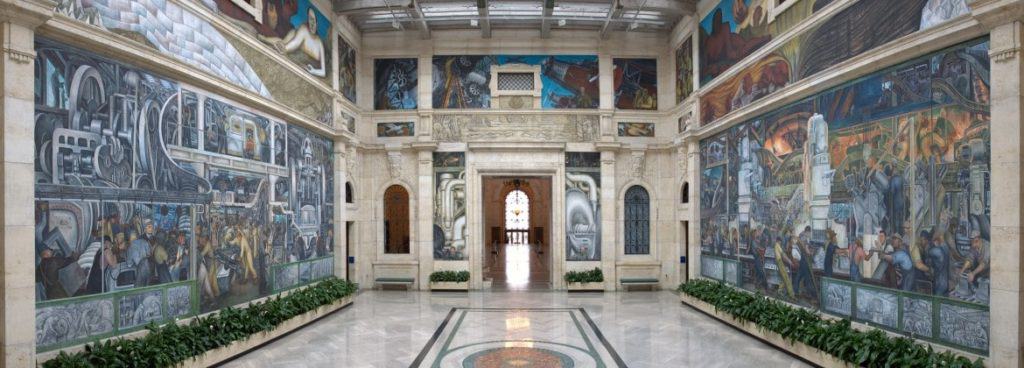
Mexican artist Diego Rivera worked over the course of nine months in 1932 to create the twenty seven paintings that grace the Detroit Institute of Arts’ Garden Court. Utilising a fresco technique common in ancient Greece, Rome, and Egypt; Rivera created a sweeping monument to the history of Detroit. Detailing the geological, technological, and cultural milestones of the then-industrial giant of a city — he illustrated the Midwestern United States’ capitol as a modern marvel. Ultimately, Diego Rivera would consider these Detroit Industry murals his finest work.
Maxfield Parrish’s Old King Cole
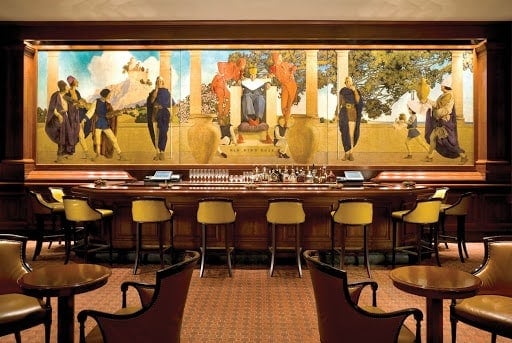
American painter Maxfield Parrish was approached in 1906 by hotelier John Jacob Astor (who was later struck down in the sinking of the Titanic) to create a mural to go above the bar at his hotel, The Knickerbocker, on 42nd Street. Though Parrish was a non-drinking Quaker he relented when Astor offered him $5,000 for the work (a small fortune at the time). Parrish crafted a painting centered on the children’s rhyme about Old King Cole, with Astor painted atop the throne. Legend has it that Parrish cheekily painted Astor’s King Cole while passing some royal gas, flanked by knowingly smirking attendants. Though The Knickerbocker was short lived Parrish’s Old King Cole mural has been lovingly restored and remains atop the bar at what is now New York City’s St. Regis Hotel.
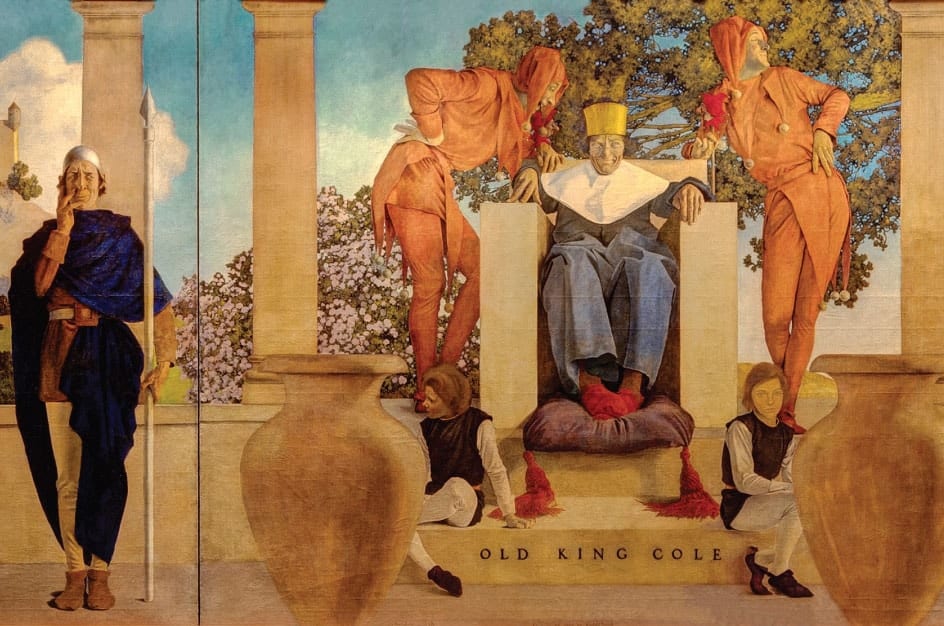
Henri Matisse’s The Dance
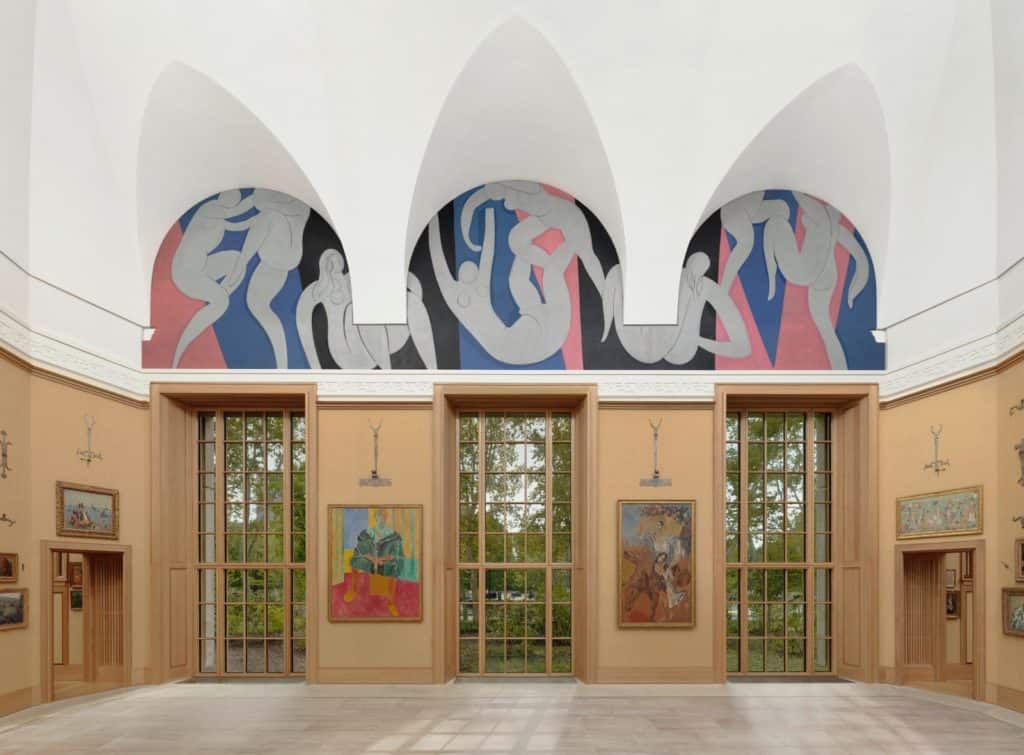
When Henri Matisse travelled from France to the United States in the 1930s, he paid a visit to art-lover Dr. Albert Barnes, the owner of the largest Matisse collection in the country. Barnes commissioned the French painter and collagist to create unique works to fill the lunettes of his mansion and Matisse crafted three separate canvases bedecked with dancing figures that would be transported from Nice, France to their resting place within the Barnes home. Dr. Albert Barnes would go on to create his own art museum out of his home, and the Barnes Foundation in Philadelphia now houses one of the largest Matisse collections in the world.
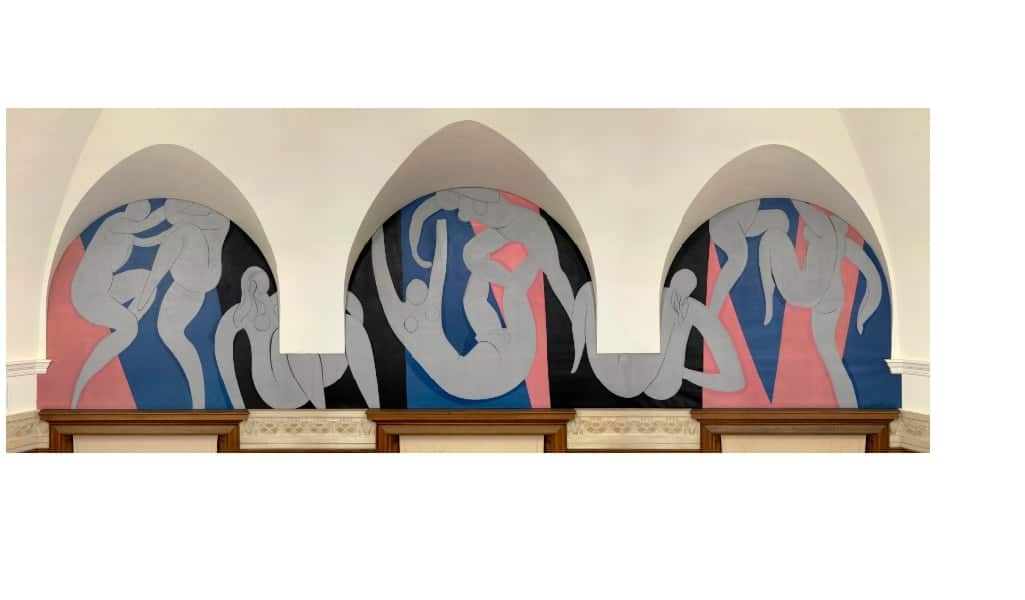
René Magritte’s The Enchanted Domain

The Knokke Casino, a seafront casino in West Flanders, Belgium is the unlikely home to some of the most expansive artwork in Europe; displaying works by Keith Haring, Paul Delvaux, and René Magritte. The largest casino in Belgium, the Knokke casino was the first of four designed by architect Léon Stynen. Though severely damaged during World War II, the renovation allowed Belgian surrealist master René Magritte the opportunity to create a massive mural, spanning 360 degrees of event space. The mural, The Enchanted Domain, was finished in 1953 and comprises eight panels that plunge their viewers into a fever-dream of surrealist joy.

Pablo Picasso & Carl Nesjar’s The Fishermen
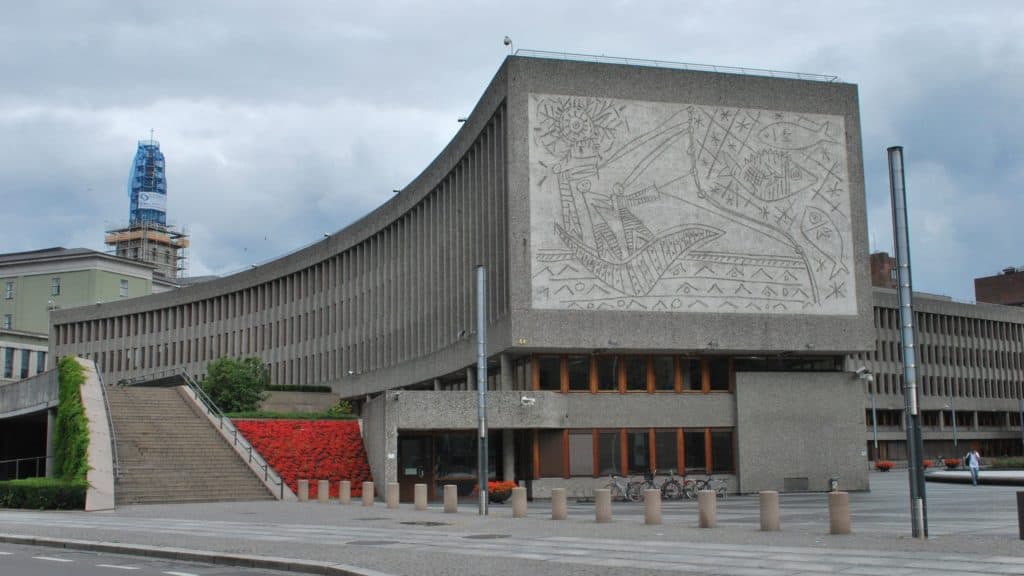
“To cut the works loose in order to integrate them into a new architectural unit will most certainly reduce the artistic work.”
Gunhild Varvin, head of communication at Henie Onstad Kunstsenter
The Fishermen mural in Oslo, Norway is likely to be the most controversial mural on this list. Designed by the legendary Pablo Picasso and crafted in concrete by Norwegian artist Carl Nesjar, The Fishermen was among a series of five murals throughout central Oslo, bedecking Regjeringskvartalet (translated: government quarter) buildings. Though the buildings were nominated to become heritage listed and protected in 2011, a terrorist attack that damaged them and killed eight people, derailed these plans. Despite sizeable public outcry The Fishermen and The Seagull (a mural from inside the building) were removed in July 2020 to be re-established in a more secure rebuilt public building in the near future.
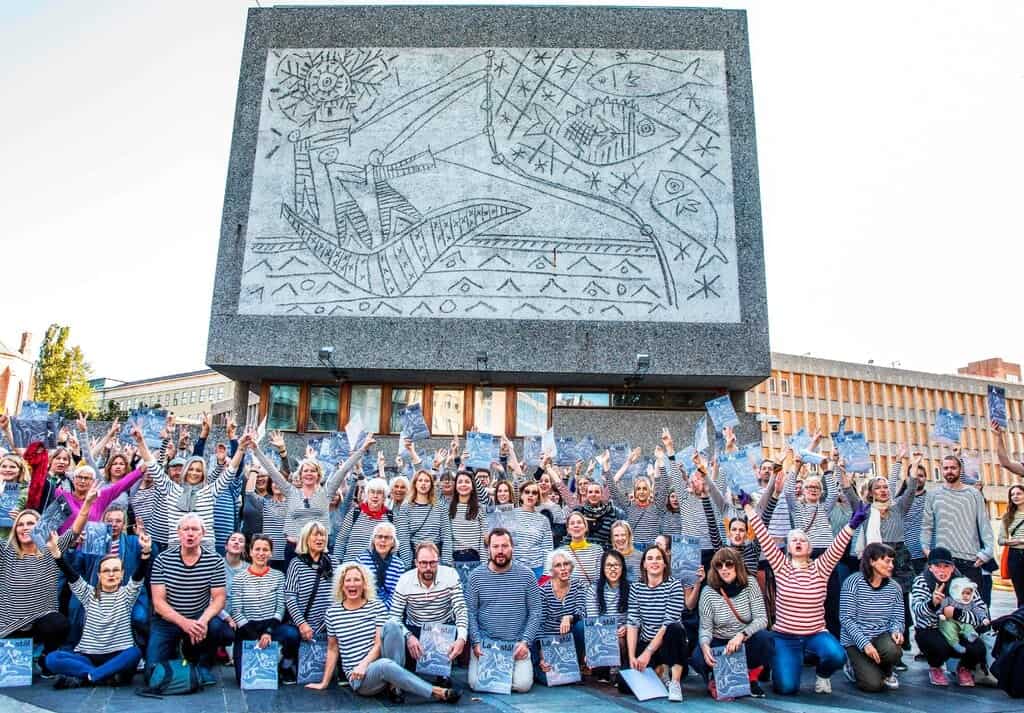
Keith Haring’s mural Channel Surf Club
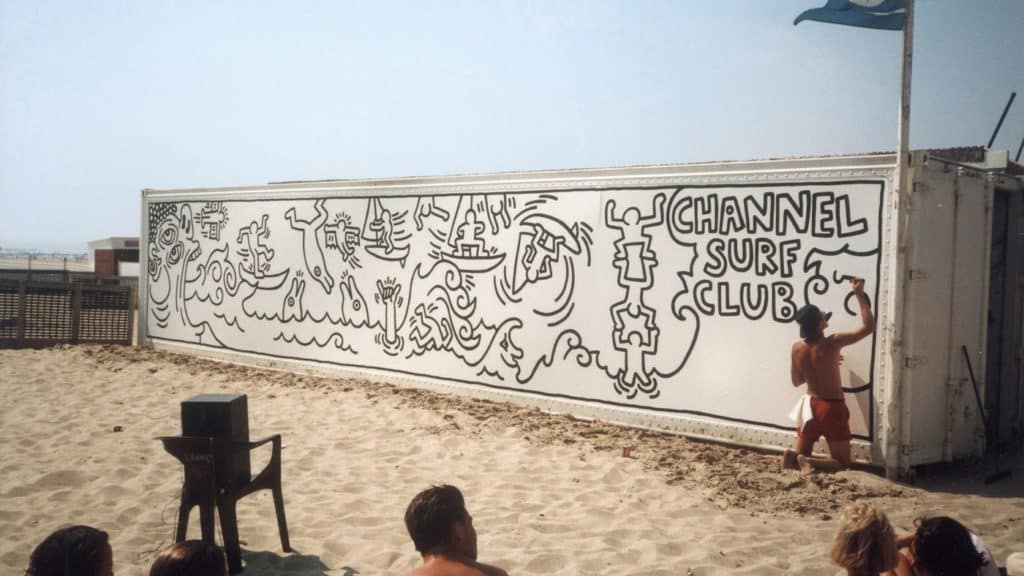
“For myself, I aim for an art which would be in immediate connection with daily life which could start from our daily life and which would be a very direct and very sincere expression of our real life and real moods.”
Keith Haring
Though Keith Haring’s murals can be found around the world, his work for the Belgian Channel Surf Club in Knokke is certainly a standout piece. By invitation of Roger Nellens in 1987, Haring arrived in Knokke to continue the legacy of the Nellens family — as his father is the man to have commissioned René Magritte’s The Enchanted Domain in the nearby casino. Painted in a single day Keith Haring’s mural depicts the swimmers present in the rising tides, crashing through waves and advancing towards a grotesque but humorous sea monster that aims to consume them. With his characteristic pop-art figures and comic-book-like language, Haring’s impression on the seaside town cemented an artistic legacy lasting far longer than the tragically short life of the artist.
Paula Rego’s Crivelli’s Garden (The Visitation)
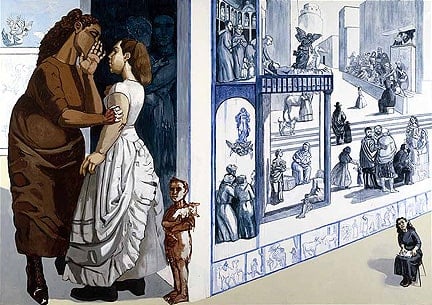
Portuguese artist Paula Rego’s murals, found tucked at the back wall of the restaurant in the Sainsbury wing of London’s National Gallery offer up complex narratives chock full-of drama. The large-scale figurative works incorporate Portuguese symbolism, with blue and white tile shining behind her psychologically-laden characters, tense with emotion and unsaid words. The disquieting murals offer plenty of material for the audience’s eye, as the characters shrink and expand in size and scale and people are interspersed with animals, angels, and mythical creatures.
Sarah Morris’ Jardim Botânico [Rio]

Reacting to the architecture of the room, American artist and filmmaker Sarah Morris crafted a monumental mural for the entrance hall of the Kunsthalle Bremen. Entitled Jardim Botânico [Rio] (translated: Botanical Garden), the piece is part of the artist’s new series Rio. The panoramic mural spans the entirety of the central hall, combining luminous rich colours with geometric grid structures and curved forms to create an immersive environment. The abstract work provides visual rhythms that incorporate modernist geometric-abstract art and contemporary industrial design.
Lothar Götz’ Dance Diagonal
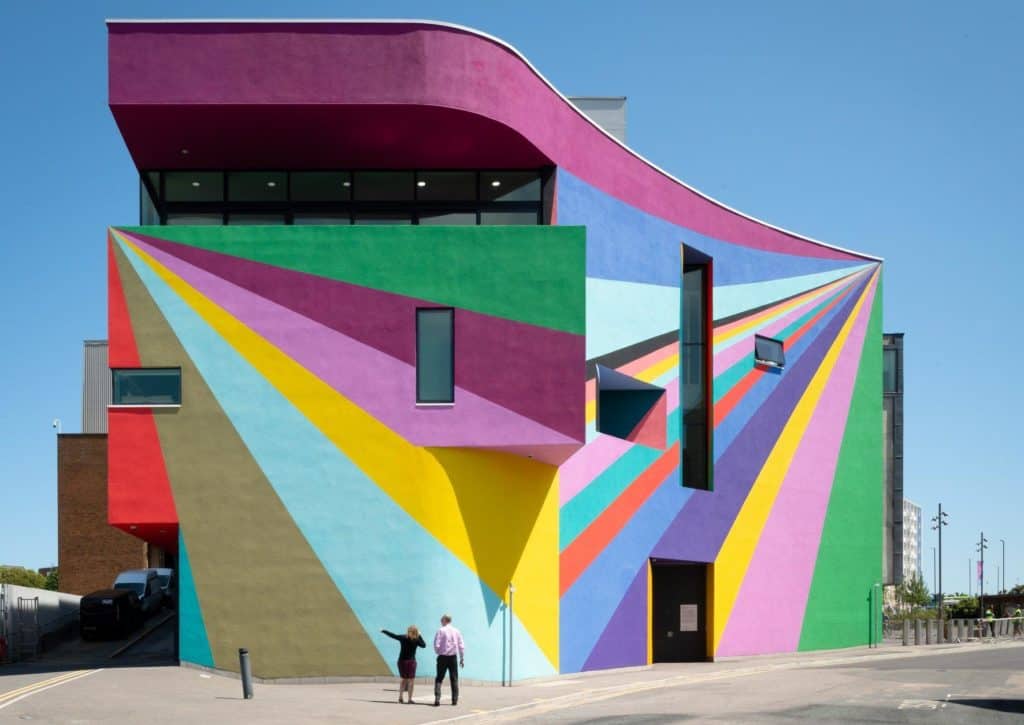
Lothar Götz’ Dance Diagonal was originally commissioned by Brewers Decorators Centres in Eastbourne as part of the art gallery’s tenth anniversary celebration to bedeck the building for a temporary exhibition. Extended through to 2021, the brilliantly coloured piece has brightened the spirits of locals and tourists throughout the coronavirus pandemic. Created with over 900 litres of specially hand-mixed shades of high-quality paint, Götz’ work was designed to be as vibrant as possible, and can be spotted from numerous viewpoints around the town. Wrapping cleverly around the structure, Dance Diagonal incorporates the existing architecture of its canvas into the artwork, inextricably building off of the form of the building to create a brand-new conception of the space.
Relevant sources to learn more
Learn more about the removal of Picasso’s murals from central Oslo
See some of the most controversial public art in the world
Keith Haring has murals all around the world, check out the map to find his work near you